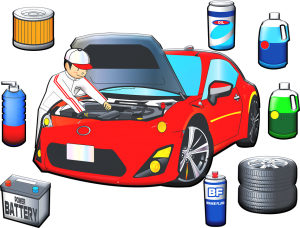An oil dipstick is vital for monitoring and maintaining the oil level in your vehicle’s engine. It plays a crucial role in ensuring your engine’s smooth operation and longevity. In this article, we will explore the purpose of the dipstick, provide instructions for its proper use, and discuss the advancements in dipstick technology.
Purpose of the Dipstick
The engine relies on oil for lubrication, which is essential for the smooth functioning of its mechanical parts. The oil reservoir is located in the lower crankcase of the engine. To check the oil level in this reservoir, a tube connected to the top of the engine guides the dipstick, a metal rod immersed in the oil at the bottom. The dipstick features two markings: a minimum oil level mark and a maximum oil level mark.
Instructions for Using the Oil Dipstick
Using the dipstick is a relatively straightforward process. Here are the steps to follow:
- Switch off the engine and allow a few minutes for the oil to settle at the bottom of the crankcase.
- Open the hood and locate the dipstick. It is usually topped with a brightly coloured plastic handle, commonly yellow or red.
- Remove the dipstick and wipe off any oil from the stippled area using a cloth.
- Reinsert the dipstick for a second check.
- If the oil level is below the minimum mark, add approximately 3/4 more engine oil to reach the maximum level. Insufficient oil levels can lead to loss of oil pressure and potential engine damage.
- If the oil level is between the minimum and maximum marks, top-up sparingly to avoid exceeding the maximum level.
- If the oil level is above the maximum mark, it is recommended to remove the excess oil through partial draining or suction. Excessive oil levels can cause the engine to malfunction, especially in diesel engines, where the oil can be drawn back into the intake system.
It is crucial to identify the causes of overfilling, including accidental oil addition, the presence of coolant in the oil, or diesel fuel contamination. In such cases, seeking assistance from a repair shop is highly recommended.
Advancements in Dipstick Technology

In modern vehicles, traditional dipsticks are being replaced by electronic systems that indicate the oil level on the instrument cluster. Here are two common types:
1. Dipstick with Integrated Electronics
This dipstick combines the traditional manual dipstick with an integrated electronic sensor. It provides both manual and electric control functions, although it is no longer commonly used in new-generation vehicles.
2. Level Sensor
Positioned within the crankcase and independent of the dipstick, this system has become more prevalent. It provides accurate oil level readings and offers various alerts and warnings before engine startups, such as a yellow warning light resembling waves under an oil can or dipstick, bar graph displays, and warning messages.
The Significance of Regular Oil Dipstick Maintenance
Regularly checking the oil level using the dipstick is paramount to maintaining a healthy engine. Ensure that the dipstick, as well as the rod, handle, and gasket, are in good condition. Additionally, adhere to the manufacturer’s instructions for oil changes and recommended maintenance intervals. Pay particular attention to checking the oil level before embarking on long-distance journeys, as it ensures optimal engine performance and prevents potential issues.
In conclusion, mastering the use and handling of an oil dipstick is essential for any vehicle owner. You can enjoy a smooth, reliable, and efficient driving experience by diligently checking and maintaining the oil level. We invite you to share your thoughts and experiences regarding the importance of oil dipstick maintenance. Feel free to leave your valuable comments below. Your feedback is highly appreciated!




